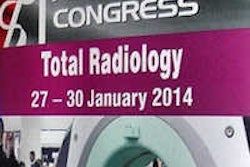Long-term follow-up of patients with two types of breast tissue abnormalities suggests that both types of abnormalities have the same potential to progress to breast cancer.
Results of the study were published in Cancer Prevention Research, a journal of the American Association for Cancer Research.
The findings challenge the current belief that atypical ductal hyperplasia (ADH) leads to breast cancer in the same breast, while atypical lobular hyperplasia (ALH) may not be a direct precursor of breast cancer, but it may indicate equal risk of breast cancer across both breasts, according to researchers at the Mayo Clinic in Rochester, MN.
Instead, the researchers found that the two types of atypia behave similarly in terms of what happens to patients, even though they look different histologically (Cancer Prev Res, January 30, 2014).
Dr. Lynn Hartmann and colleagues identified 698 women who had biopsy-confirmed abnormalities; 330 of them had ADH, 327 had ALH, and 32 had both. The investigators followed these women for an average of 12.5 years and found that 143 developed breast cancer. The ratio of breast cancer in the same breast in which the abnormality was detected versus the opposite breast was the same, 2-to-1, for both ADH and ALH.
Current understanding of ALH dictates that it mostly leads to the development of lobular cancer. But Hartmann's group found that ALH predominantly resulted in ductal cancer of the breast, similar to ADH. In addition, both ADH and ALH resulted in invasive ductal cancers, of which 69% were intermediate or high grade.
The findings suggest that women with either type of abnormality at breast biopsy should be tracked, the authors concluded.



















